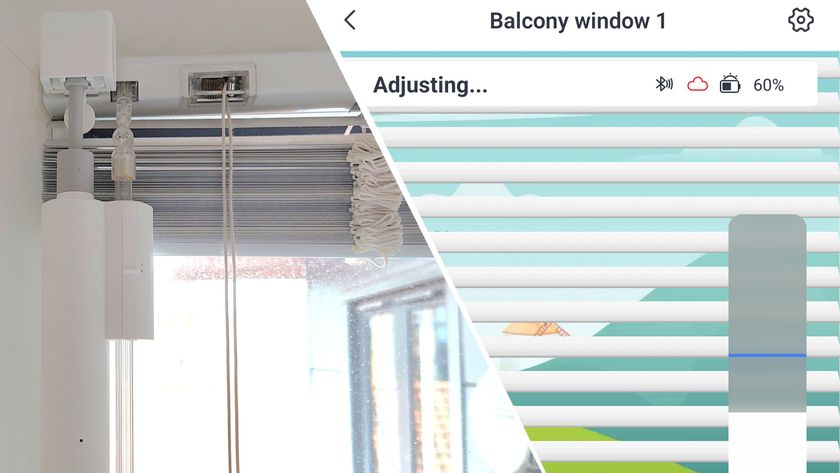TechRadar Verdict
The Pentax K10D is quite a surprise. Its performance matches anything its rivals can do
Pros
- +
Excellent image quality
Good anti-shake
Dual-RAW modes
Useful features
Cons
- -
Lenses can't match the camera's quality
Why you can trust TechRadar
The last Pentax SLR we reviewed, the K100D, was pleasing enough but disappointing in certain respects. The main issue was that it's cosmetically and technically hard to distinguish from all the Pentax cameras that have gone before, even down to the now ordinary 6-megapixel sensor.
The pictures are rather good, in that they have some of the richness and depth that many digital photographers might think have gone forever in the switch from film to digital. But that isn't enough on its own. All the other major players have introduced 10-megapixel models, and it's apparent that this increase in resolution really does make a difference to the level of detail in the images.
Pentax really needed a 10-megapixel SLR. But would a 10-megapixel variant of its existing SLR design really make much difference? Well, the question's academic, because the K10D is emphatically not a higher-resolution version of the same camera. It's a completely new model.
This isn't obvious from published pictures of the K10D, but it's immediately apparent when you see it in the flesh - and when you pick it up and feel the weight. Where previous Pentax cameras were solid but a bit toy-like in their dimensions, this one clearly means business. Any thoughts of comparing it to the dinky Canon EOS 400D are banished.
Instead, you start to compare it to the Nikon D80 (which looks a bit plasticky by comparison) and find it rivals the pricey EOS 30D for smooth-cornered solidity.
RAW power
With two control wheels rather than one, it's easy to make quick and intuitive adjustments to the shutter speed and aperture. The mode dial is completely free of amateur-orientated scene modes, and you can shoot in two RAW modes.
You can shoot standard Pentax RAW (PEF) files and convert them using the bundled Pentax Photo Laboratory software, or you can shoot Adobe DNG files and open them in many different RAW converters, without having to wait for a camera-specific update.
The K10D goes further still. On the lens flange on the left of the body, there's a RAW button. You press this to take the next shot in RAW mode - perfect for those who normally shoot JPEGs but want to be able to fire off the occasional RAW file without having to trudge through the menus to switch formats. Not that there's much wrong with the K10D's JPEGs. The RAW files are possibly a fraction sharper, but there's nothing like the difference you get with the Canon EOS 400D, whose JPEGs are soft to the point of mushiness.
There are some items on the mode dial that deserve special attention. The Hyper-Program mode is similar to any program 'shift' function: you turn a wheel to change the aperture/ shutter speed combinations while maintaining the same exposure.
The Hyper-Manual mode, though, is smarter. This works like any other Manual mode, except that if you press a green button alongside the shutter release the camera sets shutter speed and aperture settings for the lighting conditions. And, if you then hold down the AE-L button, you can turn the front control wheel to adjust the shutter speed/aperture combination without altering the overall exposure.
In Sv (Sensitivity-Priority) mode you choose an ISO appropriate to the conditions and the camera then picks the shutter speed and aperture. It's hard to see the difference between this and simply adjusting the ISO in the normal way.
But the real star is the TAv mode. Here, you choose the shutter speed and aperture you want and the camera picks the ISO needed for correct exposure. We used it for a close up of a hebe bloom, deciding the minimum safe shutter speed had to be 1/60 sec and that we needed f/8 for sufficient depth of field. The camera then picked the ISO (400). Brilliant!
The Pentax's anti-shake system is effective, too. It works by moving the sensor during the exposure to counter any movement it detects, just like the system used in the Sony Alpha 100. Where the Sony's clanks and grinds, though, this one is inaudible. In our tests, it produced sharp shots at shutter speeds far slower than we'd normally attempt hand-held.
There's plenty of noise at the highest ISOs, but this isn't surprising given the increase in pixels without any corresponding increase in the sensor area. Images at ISO 1600 are acceptable, though, and you have to print at A4 size or larger before noise becomes visible. All-round, the Pentax's picture quality is very good. The colour rendition is excellent, the exposures good and the contrast strong.
Focus on lenses
And the kit lens is quite good too. Yes, it's the same lowly-specified 18-55mm f/3.5-5.6 zoom that's supplied with the budget 6MP cameras, but there's more to this lens than meets the eye. First, there's the metal lens mount - a rarity in these days of plastic kit lenses.
Then there's the focusing scale, enabling you to pre-focus and 'zone focus' for classic shoot-from-the-hip street photography. The fact that the front lens element doesn't rotate during focusing is perfect for landscape photographers using graduated filters and polarisers. And if you decide to try some close-ups, you'll be surprised by just how close this lens can focus, even at its telephoto setting.
The K10D feels like a pro-spec body, but there are precious few pro-spec lenses to put with it. This is one area where Canon and Nikon have a clear advantage.
In all other respects, the K10D is a serious rival to the Canon EOS 400D, Nikon D80, Sony Alpha 100 and Olympus E-400. Its picture quality is as good as any of them, and its build quality is better.
Via PhotoRadar
Skin Tones
The K10D's Cloudy white balance preset produces very warm looking results, and for this window-lit shot the auto white balance produces more balanced colours.
Indoor
The Bright mode has injected some saturation and contrast into this shot. Thanks to the anti-shake system and ISO 1600 max, you can shoot in almost any conditions.
Outdoor
Landscapes and skies benefit from the Pentax's strong colour rendition, and for extra post-processing flexibility you can shoot in one of two different RAW formats.
Tech.co.uk was the former name of TechRadar.com. Its staff were at the forefront of the digital publishing revolution, and spearheaded the move to bring consumer technology journalism to its natural home – online. Many of the current TechRadar staff started life a Tech.co.uk staff writer, covering everything from the emerging smartphone market to the evolving market of personal computers. Think of it as the building blocks of the TechRadar you love today.













